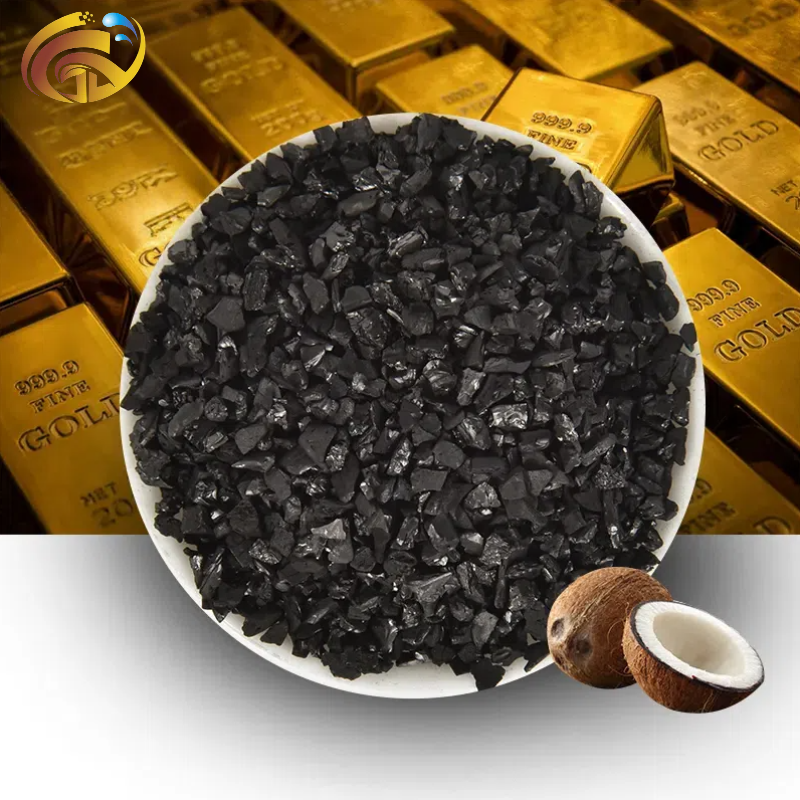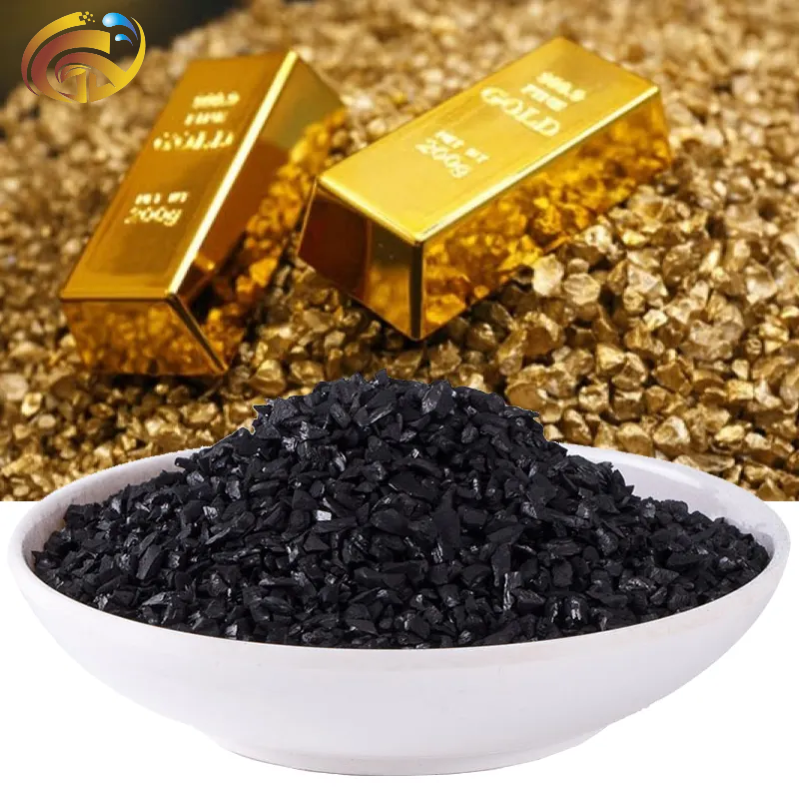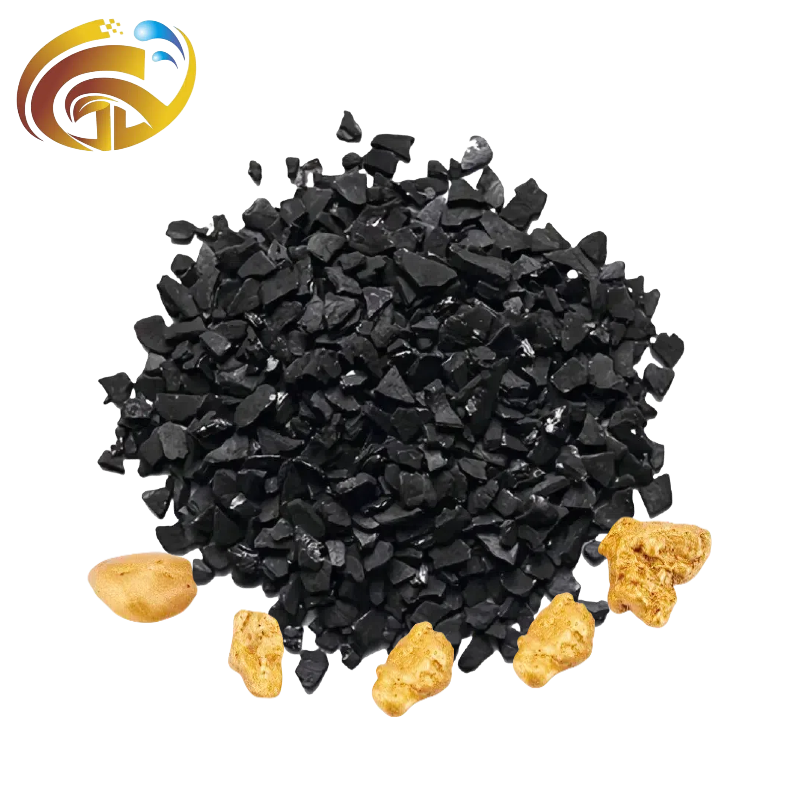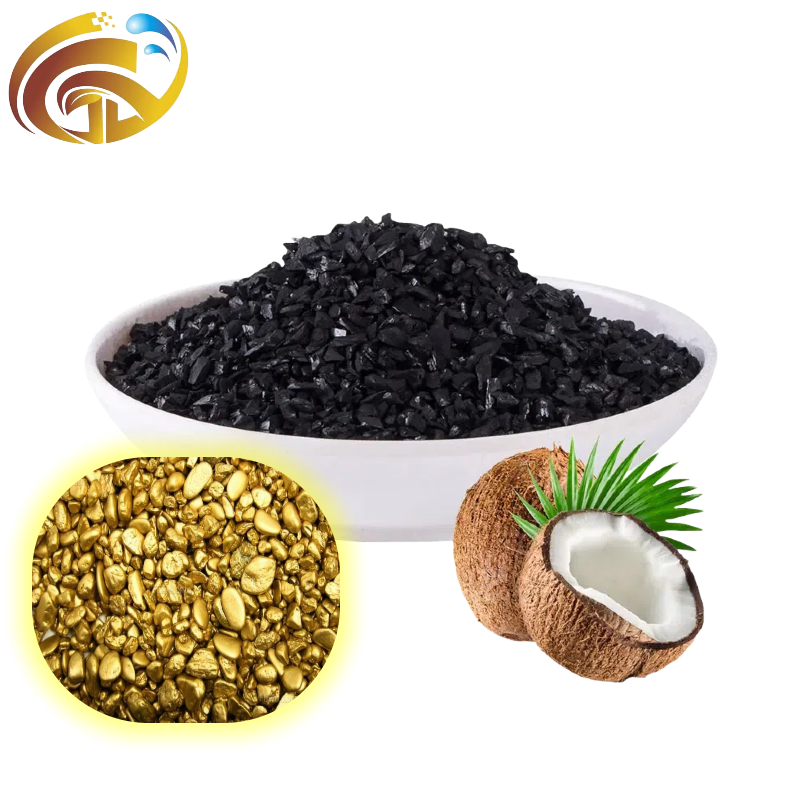How to choose good gold mining activated carbon?
Gold Extraction Activated Carbon
As we all know, gold is a very expensive metal, so its extraction process is naturally a very important matter. With the development of gold production and advancements in technology, gold extraction processes have been improved and refined.
Coconut shell activated carbon plays a vital role in gold refining and offers many advantages for adsorbing gold.
9 key points to choose good activated carbon
The following 9 characteristics are important when selecting activated carbon for gold recovery. Performance is directly related to: productivity of gold refining, and the amount of gold wastage and loss.
1.Raw materials
The thicker the coconut shell, the better. Selecting thicker coconut shells with low volatility, low moisture, and high fixed carbon content will produce a stronger, thicker activated carbon with lower ash content and better gold adsorption capacity and efficiency.
2.Mesh
The smaller the mesh size of the activated carbon, the faster it will adsorb gold. However, the smaller the mesh size, the more difficult it is to sift the carbon from the slurry, which can result in loss of both the activated carbon and the gold. If the carbon particles are too large, the rate of gold adsorption will slow down.
3.Absorption capacity
The adsorption capacity of activated carbon is often referred to as loading capacity, which refers to how much activated carbon can adsorb. The adsorption capacity is related to the physical and chemical properties of the activated carbon. The higher the adsorption capacity, the higher the gold adsorption capacity.
4. Absorption rate
The adsorption rate is also greatly affected by the physical and chemical properties of the activated carbon. The higher the adsorption rate value, the faster the gold adsorption rate.
5. Mechanical strength or wear resistance/hardness
The hardness of activated carbon used in gold refining is just as important as its gold adsorption performance. If the activated carbon's strength is too low, it will wear down into fine particles, resulting in not only the loss of activated carbon but also the loss of gold, ultimately significantly reducing the effectiveness of gold adsorption. Therefore, a high-quality activated carbon for gold recovery is a compromise between hardness and gold adsorption performance. Coconut shell-based activated carbon has been found to be the most suitable activated carbon for this application.
6. Iodine value
The higher the iodine value of activated carbon, the more developed its pores, and the higher the gold content and adsorption rate of activated carbon under certain working conditions.
7. CTC value
The higher the CTC value of activated carbon, the more developed its pores. Under certain working conditions, the higher the gold-containing capacity and adsorption rate of activated carbon.
8. Appearance activity
A more uniform carbon size and cleaner appearance also increase gold adsorption. Strictest particle size control is employed to minimize wear and dust generation during regeneration. We source uniformly sized activated carbon, which arrives at our facility without pre-grinding and can be cleaned with water for direct use.
9. Production technology
Currently, activated carbon plants use two main activation processes: the slep furnace and the rotary kiln. To achieve a high hardness index for activated carbon, the slep furnace process controls the iodine adsorption value to around 900-950 mg/g. This increases the hardness index but compromises both gold adsorption capacity and the activated carbon's adsorption rate. However, the rotary kiln can produce activated carbon with a higher iodine value and a controlled strength exceeding 98%.




· Fujian Guangyuan Carbon Products Co.,Ltd.
